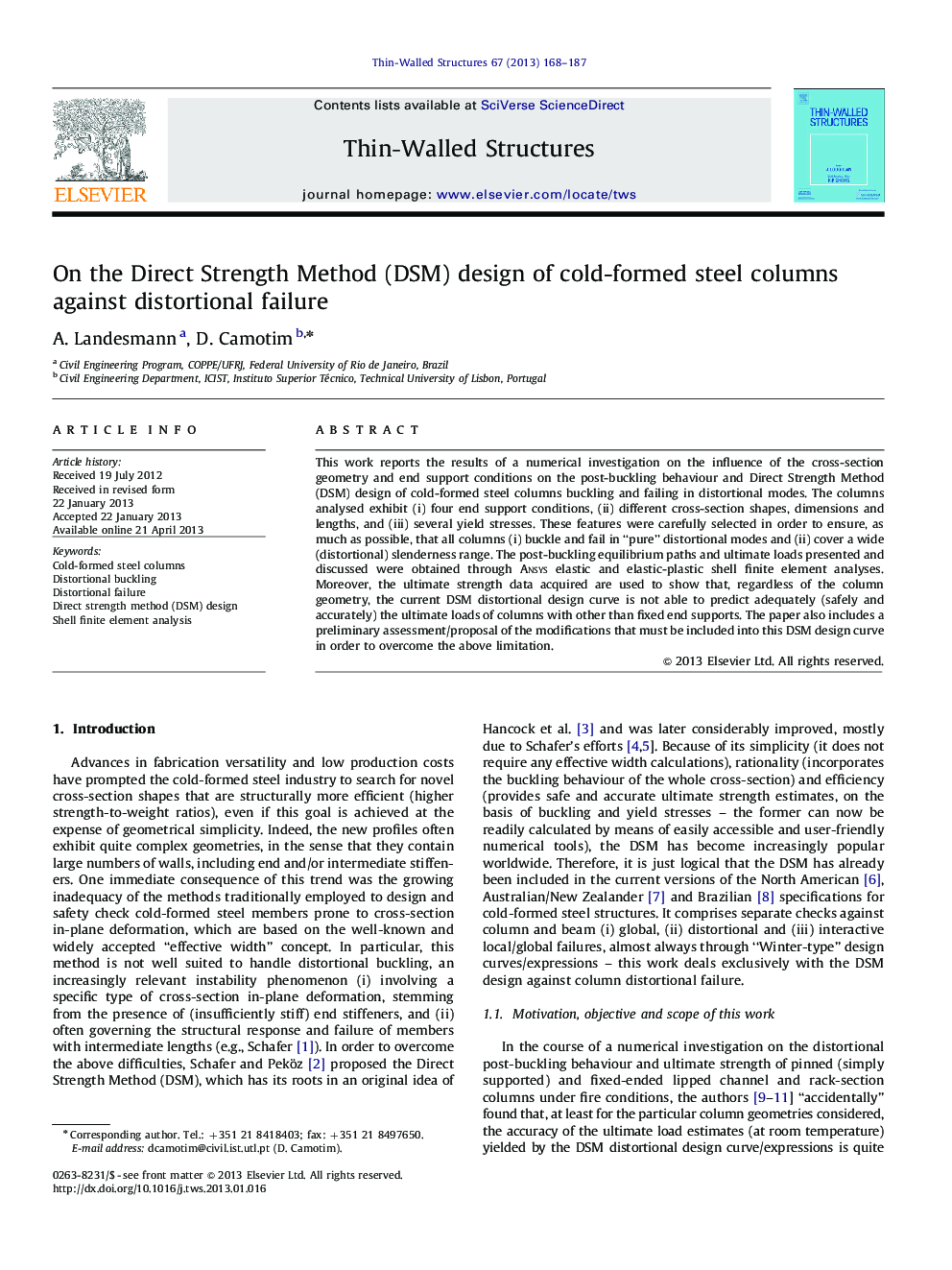| Article ID | Journal | Published Year | Pages | File Type |
|---|---|---|---|---|
| 309249 | Thin-Walled Structures | 2013 | 20 Pages |
This work reports the results of a numerical investigation on the influence of the cross-section geometry and end support conditions on the post-buckling behaviour and Direct Strength Method (DSM) design of cold-formed steel columns buckling and failing in distortional modes. The columns analysed exhibit (i) four end support conditions, (ii) different cross-section shapes, dimensions and lengths, and (iii) several yield stresses. These features were carefully selected in order to ensure, as much as possible, that all columns (i) buckle and fail in “pure” distortional modes and (ii) cover a wide (distortional) slenderness range. The post-buckling equilibrium paths and ultimate loads presented and discussed were obtained through Ansys elastic and elastic-plastic shell finite element analyses. Moreover, the ultimate strength data acquired are used to show that, regardless of the column geometry, the current DSM distortional design curve is not able to predict adequately (safely and accurately) the ultimate loads of columns with other than fixed end supports. The paper also includes a preliminary assessment/proposal of the modifications that must be included into this DSM design curve in order to overcome the above limitation.
► Direct Strength Method (DSM) design of cold formed steel columns against distortional failure. ► Numerical study involving 648 lipped channel, hat-section, zed-section and rack-section columns. ► Four columns end supported conditions considered: fixed, pinned-fixed, pinned and fixed-free. ► Current DSM distortional strength curve shown to overestimate “non-fixed” column failure loads. ► Proposal of DSM distortional design curves for columns with “non-fixed” end support conditions.
